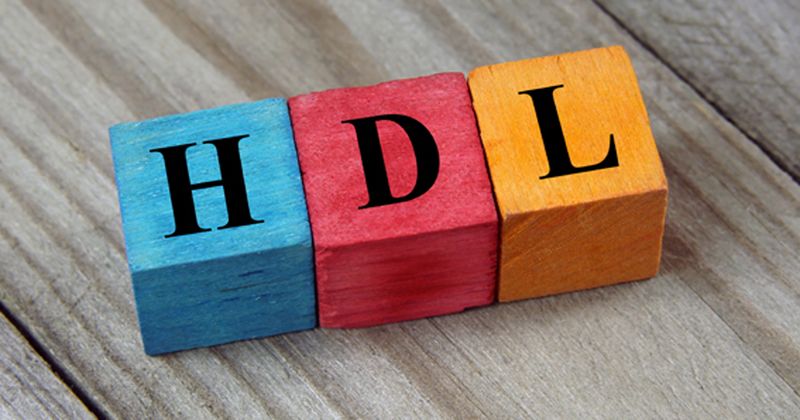Enhancing HDL function does not prevent CV events after heart attack: AEGIS II
Key takeaways:
- Four weekly infusions of apolipoprotein A-I did not reduce risk for heart-related events in the setting of acute MI.
- The therapy was well tolerated.
ATLANTA — Four weekly infusions of a novel formulation of human apolipoprotein A-I did not reduce a combination of CV endpoints at 90 days for adults with acute MI, multivessel disease and additional CV risk factors, researchers reported.
The AEGIS II trial, presented at the American College of Cardiology Scientific Session, was planned to test an evolution in the so-called HDL hypothesis: That improving HDL function after MI can stabilize atherosclerotic plaque, thereby reducing risk for major adverse CV events, C. Michael Gibson, MD, MS, interventional cardiologist, CV researcher and CEO of the combined nonprofit Baim and PERFUSE research institutes at Harvard Medical School, said during the late-breaking clinical trial presentation. The investigational infusion, CSL112 (CSL Behring), was designed to boosts levels of apolipoprotein A-I and increase cholesterol efflux capacity, potentially improving the “quality” of the HDL particles.

“This has been a 20-year odyssey. The HDL hypothesis is one of the big questions that remains in cardiology,” Gibson said during the presentation. “There have been many attempts to raise HDL, and those have not met with a lot of success. Why is that? Some of it is because there is off-target toxicity ... another problem was that even though we raised the [HDL] number, maybe the ‘good’ cholesterol was not that good. Maybe it was just ‘OK’ cholesterol; maybe it was ‘meh’ cholesterol. So, we pivoted and began to study what does it mean to really have good cholesterol?”
Hints of ‘modest’ benefit for some

Gibson and colleagues analyzed data from 18,219 adults with acute MI, multivessel CAD and additional CV risk factors. Participants were enrolled in 49 countries and the mean age was 66 years and 74.1% were men. Researchers randomly assigned participants to four weekly infusions of CSL112 6 g (n = 9,112) or placebo (n = 9,107), with the first infusion administered within 5 days after the first medical contact for acute MI. The primary endpoint was a composite of MI, stroke or CV death during 90 days of follow-up. Secondary endpoints were the same outcomes at 180 and 365 days.
The findings were simultaneously published in The New England Journal of Medicine.
At 90 days, researchers reported no significant between-group differences for the primary endpoint, with rates of 4.8% vs. 5.2% in the intervention and placebo groups, respectively (HR = 0.93; 95% CI, 0.81-1.05; P = .24). The CSL112 group had a numerically lower number of MIs and CV-related deaths — which Gibson said was consistent with previous analyses suggesting a biologic effect of plaque stabilization — and a higher number of strokes than the placebo group.
Nonsignificant differences persisted at 180 days (HR = 0.91; 95% CI, 0.81-1.01; P = .077) and at 1 year (HR = 0.93; 95% CI, 0.85-1.02; P = .137).
Gibson also said, as baseline LDL of participants increased, the potential treatment effect of CSL112 increased when analyzed as a continuous variable; however, the observation requires further study.
Adverse events were similar in both groups. The number of patients with hypersensitivity or anaphylactoid reactions leading to drug discontinuation was low, but higher in the CSL112 group than in the placebo group (14 vs. 4 patients; P = .02), Gibson said.
“Testing the HDL hypothesis in the context of successful implementation of LDL-lowering therapies is increasingly challenging,” Gibson and colleagues wrote in NEJM. “The patients in this trial showed excellent adherence to evidence-based and guideline-directed therapies that also included dual antiplatelet therapy. If apolipoprotein A-I infusions have a benefit in reducing MI beyond that of modern pharmacotherapies and device-based therapies, the benefit appears to be modest.”
‘Time to shelve’ HDL therapeutics?

In a related editorial published in NEJM, Christie M. Ballantyne, MD, FACC, FACP, FAHA, FNLA, chief of the section of cardiovascular research and professor of medicine at Baylor College of Medicine, and Vijay Nambi, MD, PhD, associate professor of medicine at Baylor College of Medicine and staff cardiologist at Michael E. DeBakey Veterans Affairs Hospital, noted that many early post-acute MI events may be related to stent thrombosis, which may not be effected by cholesterol efflux. Moreover, most lipid-altering therapies start showing benefits at approximately 12 months or later.
“Before declaring that the AEGIS II trial is the final curtain call and retiring therapies aimed at the ‘Highly Disappointing Lipoprotein,’ perhaps a reconceptualization is needed that focuses on developing better assays for characterizing HDL functions that can be used in conjunction with genomics, metabolomics, proteomics, and transcriptomics to identify new targets and the correct population in which to test therapies to improve cholesterol efflux and the functionality of HDL,” Ballantyne and Nambi wrote. “Until then, perhaps it is time to shelve HDL therapeutics and put them on the ‘injured reserve list’ of preventive therapies for cardiovascular disease.”
Reference:
- Ballantyne CM, Nambi V. N Engl J Med. 2024;doi:10.1056/NEJMe2403036.
- Gibson CM, et al. N Engl J Med. 2024;doi:10.1056/NEJMoa2400969.


